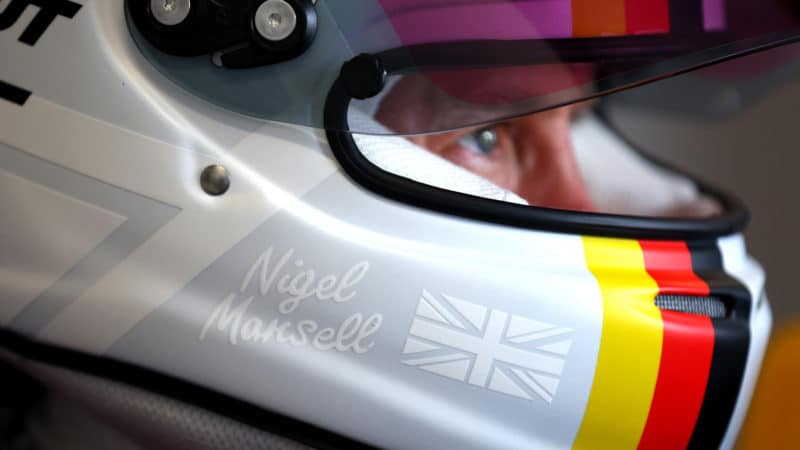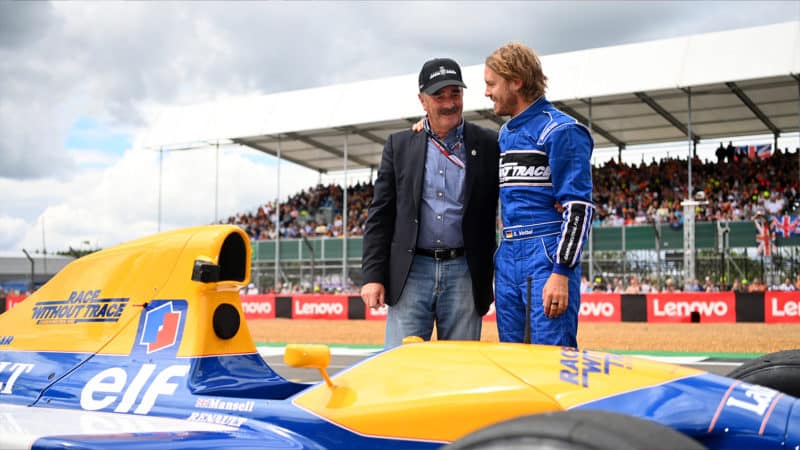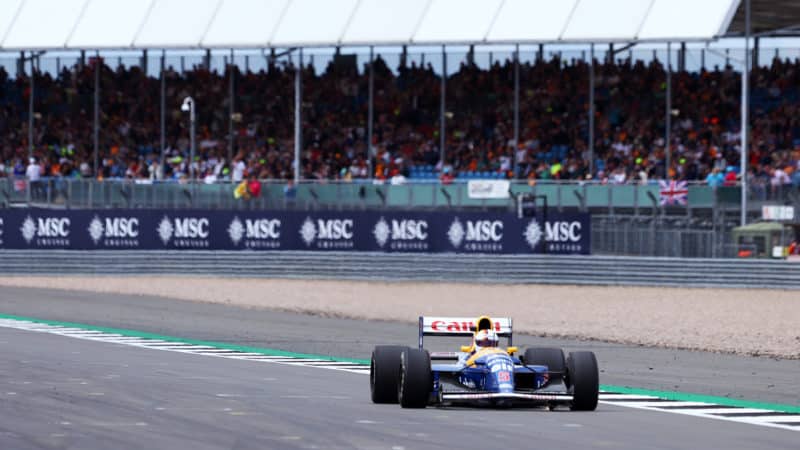It’s not widely known that Vettel also owns a 1993 McLaren MP4/8 – the Ayrton Senna Monaco-winning car that was erroneously reported to have been bought by Bernie Ecclestone when it came to auction a few years ago.
Vettel has already had a private track day in it, having specifically asked to have Senna’s settings applied.
“I was pushing a little bit harder on that!,” he smiled. “Because I had a bit more time, now I only had like two and a half or three laps in order to wave as well and take the crowd in and enjoy.
“When I had the idea, I looked at the date and it was 2022, half a year ago I realised it was 2022. And there was the idea that 30 years ago Nigel won, and it would be great to take Nigel’s car out at Silverstone.”
Zero-carbon synthetic fuel will help keep F1 alive
Running on synthetic fuel, which is produced by combining hydrogen and carbon with renewable energy, was a big deal to Vettel, who didn’t want to be seen running around purely for his own pleasure.
“It was vital, I wouldn’t have done it otherwise,” he said. “As much as I love the car, and obviously I bought the car at the time with the ambition to drive it, I think it is so important that you do it in a sort of responsible manner.
“I don’t want to go too far, but if you just do it and then burn the fuel, somehow it’s not right. Once we found the fuel and then had the help from Renault, also Williams and the heritage department to check the car, which took some time, a bit longer than we thought. So it was a bit tight at the end to get everything together! But it worked. It was great.”

Vettel incorporated Mansell’s famous Union Jack livery and signature on his tribute helmet
Clive Rose/Getty Images
F1 has targeted a move to sustainable fuel as part of the new power unit regulations that are coming for 2026. Vettel’s demo run begged the obvious question – could or should that happen even earlier? There has already been a move to 10% biofuel content for this season.
“You wonder what’s going to happen to motor sport,” he said. “Looking down the line, [in] 2026 there is the plan for synthetic fuels to come in. In which form, where they get their hydrocarbons from, is not entirely clear yet.
“You need to understand the bigger picture, obviously, what happens on the road is different to what happens on track. You have 1.5 or one billion cars, what do you do with them in the future? Other than cars, you have trucks, you have ships, you have planes, which might be even a bigger question, what to do with them.





